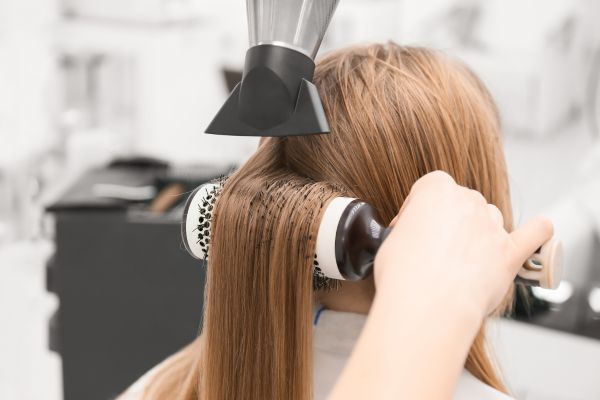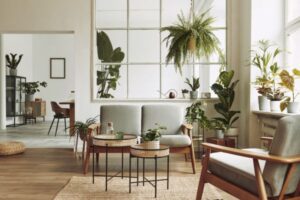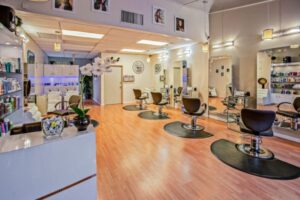The world of beauty salons is not only about providing exceptional services and treatments; it is also about creating an immersive and inviting atmosphere that captivates clients from the moment they step through the door. One powerful tool that beauty salon owners can utilize to influence the mood and emotions of their clients is the strategic use of color. The psychology of color plays a significant role in shaping human perceptions, emotions, and behaviors, and understanding this influence can be a game-changer for salon owners seeking to create a memorable and transformative experience for their clients.
In this in-depth article, we will explore the profound impact of color in beauty salons and how it can be harnessed to evoke specific moods and emotions. From the soothing and calming effects of cool colors to the energizing and invigorating vibes of warm hues, each color has a unique psychological association that can be leveraged to create a well-rounded and emotionally appealing salon environment. We will delve into five key aspects of color psychology in beauty salons, analyzing how color choices can influence customer experiences, perceptions of services, and overall brand identity. Let us embark on this enlightening journey into the world of colors and emotions, where the artistry of design intertwines with the science of human psychology.
The Impact of Cool Colors: Calmness and Serenity
Cool colors, such as shades of blue, green, and purple, have a tranquil and calming effect on the human psyche. Incorporating these colors in the salon’s decor can create a serene and relaxing environment, perfect for services that aim to provide a sense of escape and rejuvenation. Light blues can evoke feelings of freshness and purity, making them ideal for nail care and skincare stations. Soft greens bring to mind the soothing aspects of nature, making them well-suited for relaxation areas or waiting lounges. Lavender hues, with their associations with spirituality and mindfulness, can enhance the ambiance of massage and spa rooms.
In addition to creating a calming atmosphere for clients, cool colors also contribute to the perception of a clean and hygienic environment, an essential factor in the beauty industry. By strategically using these colors throughout the salon, owners can instill a sense of trust and comfort in their clients, reinforcing the salon’s commitment to providing a safe and inviting space.
Energizing with Warm Colors: Vitality and Passion
On the opposite end of the color spectrum, warm colors, including shades of red, orange, and yellow, evoke feelings of energy, enthusiasm, and passion. Incorporating warm hues in specific areas of the salon can inject a sense of vibrancy and liveliness, creating a stimulating and engaging atmosphere. Red, with its associations with love and excitement, can be used sparingly to draw attention to key areas, such as the reception desk or retail displays. Orange exudes a sense of playfulness and creativity, making it an excellent choice for areas where clients interact or get their hair styled.
Yellow, the color of sunshine and happiness, can be used strategically to brighten up spaces with limited natural light, creating a cheerful and inviting ambiance. However, it is crucial to use warm colors in moderation, as an excessive amount can be overwhelming and may evoke feelings of restlessness. By finding the right balance, salon owners can harness the power of warm colors to elevate the overall mood and energy of their space, leaving clients feeling invigorated and inspired.
Balancing Neutrals: Elegance and Sophistication
While warm and cool colors dominate the emotional spectrum, neutrals, such as shades of beige, gray, and white, play a crucial role in creating balance and sophistication in beauty salons. Neutrals serve as an ideal backdrop for accentuating other colors, allowing the salon’s decor and branding to shine without overwhelming the senses. They provide a sense of timelessness and elegance, creating a clean and polished aesthetic.
Neutrals are particularly effective in areas where a calm and refined atmosphere is desired, such as waiting areas or consultation spaces. They also provide a sense of continuity throughout the salon, ensuring a cohesive and harmonious experience for clients. The strategic use of neutrals in combination with accent colors can create a sense of understated luxury and refinement, elevating the overall perception of the salon and its services.
Creating Brand Identity through Color
In addition to influencing moods and emotions, color plays a pivotal role in defining a salon’s brand identity. The careful selection of a color palette can convey the salon’s personality, values, and unique selling propositions. Bold and vibrant colors may be used by salons aiming to portray a fun and trendy image, attracting a younger demographic. In contrast, soft and muted colors may be favored by salons that emphasize relaxation and a high-end experience.
Consistency in color across various touchpoints, from the salon’s logo and marketing materials to the interior decor and staff uniforms, reinforces brand recognition and fosters a strong brand identity. It is essential for salon owners to consider how their chosen colors align with their target audience’s preferences and expectations, as this can significantly impact the salon’s overall appeal and success.
Cultural and Regional Influences on Color Perception
While color psychology provides valuable insights into universal associations with different colors, it is essential to recognize that cultural and regional factors can also influence how colors are perceived. Colors may hold specific cultural significance or be associated with different emotions in various parts of the world. Salon owners with diverse clientele or locations should consider these cultural nuances when incorporating colors into their salon’s design.
Furthermore, regional climate and seasonal changes can influence color preferences. For example, warm and vibrant colors may be favored in colder climates to evoke a sense of warmth and coziness, while cooler colors may be preferred in hotter regions to provide a refreshing and cooling effect. By understanding and respecting these cultural and regional differences, salon owners can create a truly inclusive and relatable environment for their diverse clientele.
Conclusion
The psychology of color is a powerful tool that beauty salon owners can leverage to influence moods, emotions, and perceptions within their establishments. From the calming effects of cool colors to the energizing vibes of warm hues, each color carries unique psychological associations that can be strategically harnessed to create specific atmospheres within the salon. The use of neutrals complements the emotional spectrum, providing balance, elegance, and sophistication.
Beyond emotional impact, color choices play a significant role in shaping a salon’s brand identity. By selecting a color palette that aligns with the salon’s personality and target audience, salon owners can foster a strong and memorable brand presence. However, cultural and regional influences must also be considered to ensure that the chosen colors resonate with a diverse clientele.
In conclusion, the artful use of color in beauty salons extends beyond mere aesthetics – it is an opportunity to create an immersive and transformative experience for clients, leaving a lasting impression on their minds and hearts. By harnessing the psychology of color, beauty salon owners can weave together a tapestry of emotions, perceptions, and brand identity that sets their establishments apart in the competitive world of beauty and wellness. Let the captivating world of colors be your ally in creating a salon that not only offers exceptional services but also fosters an unforgettable journey of beauty, rejuvenation, and emotional well-being.



